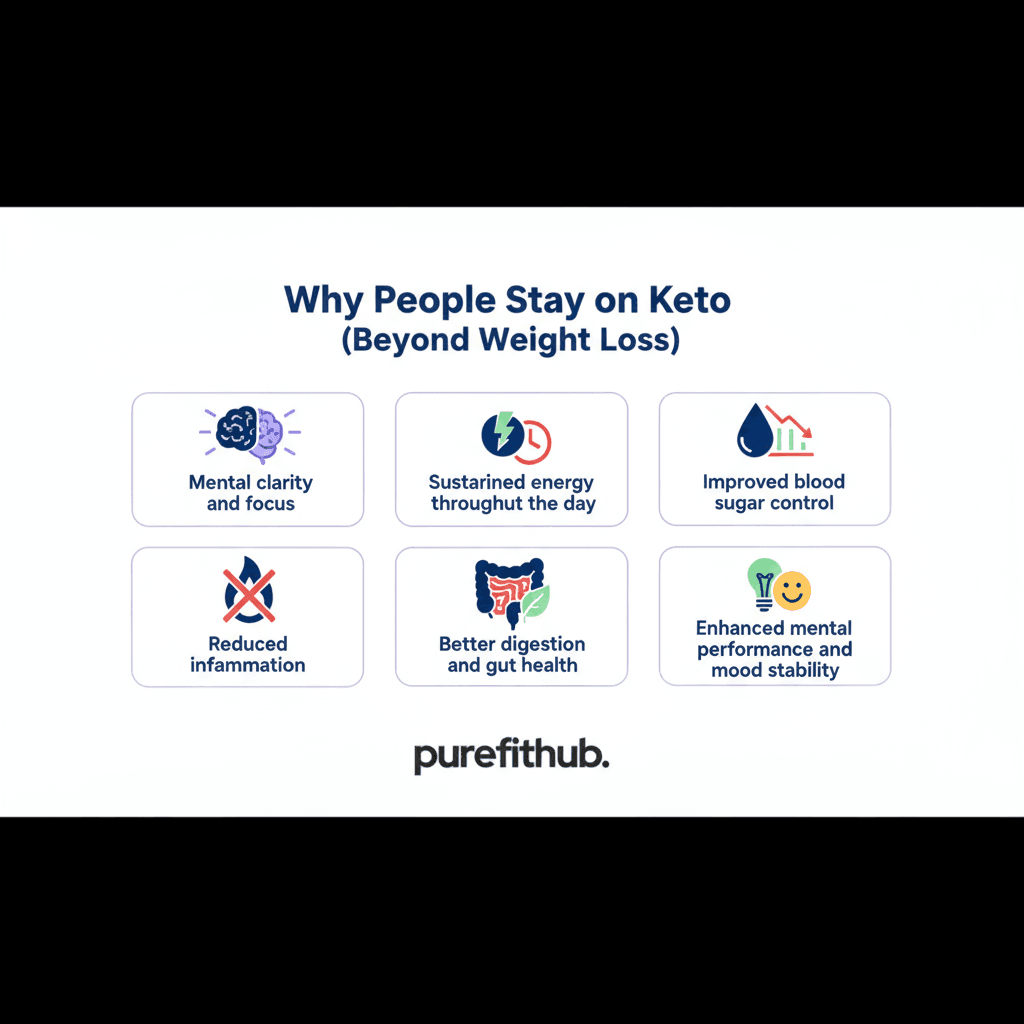Let’s be honest, the “keto diet” is everywhere, right? You’ve seen the headlines, the miracle stories, and probably a dozen different, confusing food lists. It’s enough to make your head spin. If you’re feeling overwhelmed and just want a straight answer, you’re in the right place. I’ll walk you through the basics in plain language — no hype, no judgment, just the essentials you actually need to start.
What is the keto diet, really? (One-sentence definition)
The ketogenic diet is a high-fat, low-carb way of eating that trains your body to burn fat for fuel instead of sugar.
Think of your body like a hybrid car. It prefers its primary fuel — glucose (sugar) from carbs. But when you take that fuel away, it flips to a backup system and runs on fat. Your liver breaks down fat into molecules called ketones, and when your body is mainly running on ketones, you’re in ketosis. That’s the whole switcheroo in one line: from sugar-burner to fat-burner.
Sound complicated? It’s actually simpler than most people make it.
Why Keto Might Work for You — The Real Benefits
Keto isn’t just about fitting into smaller jeans. Here’s what people commonly notice — and why it can happen.
Weight loss (but not magic)
Cutting carbs often means you feel fuller for longer and your insulin levels drop, which helps your body access stored fat more easily. Many people see steady weight loss when they stick with the approach.
More stable energy & clearer thinking
Without constant blood sugar spikes and crashes, energy tends to feel smoother throughout the day — fewer mid-afternoon crashes and often better mental focus once you adapt.
Potential help with blood sugar control
For people with insulin resistance or type 2 diabetes, reducing carbs can help stabilize blood glucose. This can be powerful, but it also requires medical oversight if you’re on medication.
It’s not a magic wand. Keto helps many people, but results vary based on how you eat, sleep, move, and your unique biology.
The “How”: Your new food list (keep this handy)
I’ll make this super scannable. Think: Yes / Moderation / Not right now.
Your New Go-To Foods (Eat plenty of these)
- Healthy fats: Avocados, olive oil, coconut oil, butter/ghee.
- Quality protein: Eggs, chicken, fish (especially fatty fish like salmon), beef, pork.
- Fat-forward snacks: Olives, full-fat Greek yogurt (in moderation), cheese (if you tolerate dairy).
Enjoy in moderation
- Low-carb vegetables: Spinach, kale, cauliflower, broccoli, zucchini, asparagus — mostly green, leafy, and non-starchy.
- Nuts & seeds: Almonds, walnuts, chia, flax — useful but watch portions (calorie-dense).
- Full-fat dairy: Cheese, heavy cream, crème fraîche — fine if you tolerate dairy.
The “Not Right Now” list
- Sugars: Soda, candy, sweets, fruit juice.
- Grains & starches: Bread, pasta, rice, cereal, most crackers.
- Starchy tubers & high-sugar fruits: Potatoes, sweet potatoes, bananas, mangoes.
- Legumes: Beans, lentils, chickpeas — higher in carbs.
If you’re wondering about fruit: berries (like strawberries, raspberries) are the easiest to fit if you really want some fruit — but keep it small.
Quick practical tip: when in doubt, pick fats + protein + a low-carb veg. That’s a meal.
Quick starting rule of thumb (if you want one)
Most beginners aim for low total carbs to enter ketosis — many people start with around 20–30 grams of net carbs per day (net carbs = total carbs minus fiber). You can be stricter or more relaxed depending on your goals and how your body reacts. Don’t obsess over exact numbers on day one — get the hang of the foods first.
Your first week: How to survive the “keto flu”
Don’t hide from this — be upfront. For the first 3–7 days (some people longer), your body is switching fuel. You might feel tired, have headaches, feel foggy, or be a little grumpy. That’s often called the “keto flu.” It sucks. But it’s usually temporary.
Why it happens: Mostly dehydration and electrolyte shifts. When your body uses up stored glucose (glycogen), each gram of glycogen leaves with water. You lose water and salts, and that can make you feel unwell.
What to do (practical, immediate fixes):
- Drink more water. Sip throughout the day. Don’t chug, but stay hydrated.
- Replace electrolytes: Add a pinch of salt to meals, drink bone broth, eat avocados (potassium), and consider a magnesium supplement if you get muscle cramps or sleep problems.
- Rest & scale activity: Light walks are fine, but don’t push heavy workouts until you feel better.
- Eat enough fats and protein: Don’t try to starve yourself — eat satisfying meals.
- If symptoms are severe or last longer than two weeks, check in with your doctor.
A small life-saver: a cup of warm bone broth is both comforting and helpful for sodium + other minerals.
A few honest realities (because I don’t want to oversell this)
- You might miss some foods. That’s normal. You’ll find replacements and meals you actually love.
- Social eating can be tricky at first. Plan ahead or bring a keto-friendly side.
- Keto can change your bathroom habits (yes, that’s part of the package). Give it time.
- If you have diabetes and take medication, keto can affect your doses. Don’t guess — work with your clinician.
That’s it. That’s the keto diet in a nutshell. It isn’t about starving — it’s about changing your fuel. You don’t have to be perfect. Start simple: swap a carb or two at a meal, add healthy fat, and see how your body responds. Take it one meal at a time.
What’s the one food you’re most worried about giving up? Or what’s the biggest question I didn’t answer yet? Tell me in the comments — I’ll jump in and help.
References
- Harvard T.H. Chan School of Public Health – Ketogenic Diet: What’s the Ketogenic Diet and Is It Safe?
- Cleveland Clinic – What Is the Keto Diet? How It Works, Benefits & Risks
- Johns Hopkins Medicine – The Ketogenic Diet: Uses in Epilepsy and Beyond
- Paoli A. et al., 2013 – Beyond weight loss: a review of the therapeutic uses of very-low-carbohydrate (ketogenic) diets, European Journal of Clinical Nutrition
- American Diabetes Association – Low- and Very-Low-Carbohydrate Eating Patterns in Diabetes, Diabetes Care, 2019
- Mayo Clinic – Ketogenic Diet: What It Is and Why It’s Popular







